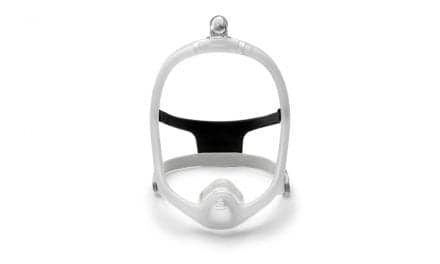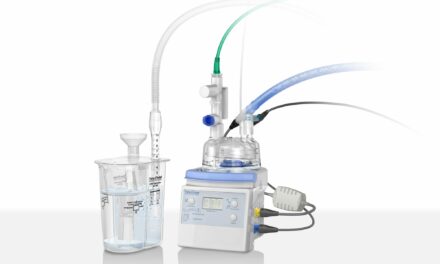After successful FDA approval, Hamilton Medical is launching the IntelliCuff pressure controller in the US. Previously available as an option for the ventilator Hamilton-G5, the innovative IntelliCuff technology has now been given its own housing. The ergonomic, handheld device is now available for use with all mechanical ventilators.
The IntelliCuff pressure controller continuously measures and automatically maintains the cuff pressure during mechanical ventilation of adults, pediatrics, and neonates using a cuffed endotracheal tube or tracheostomy.
This handy device ensures an optimal cuff pressure which increases patient safety. It also delivers cost savings and greater efficiency within daily routines in hospitals. It can be used in intensive care units, operating rooms and for inter-hospital transport.
 Optimal cuff pressure and patient safety
Optimal cuff pressure and patient safety
The leakage of oral secretions past the endotracheal tube (ETT) is a causative risk factor in the development of ventilator associated pneumonia1,2 (VAP), and excessive cuff pressure is a risk factor in tracheal injuries.3
Continuously optimized and controlled cuff pressure supports ventilation therapy and protects patients. Hamilton Medical has developed IntelliCuff to make mechanical ventilation more efficient and, above all, safer.
Improved cuff pressure management
Existing solutions for endotracheal tube cuff pressure management require manual monitoring and adjustment of cuff pressure, which is a critical aspect of the ICU staff workload. It has been shown that up to eight manual adjustments of cuff pressure are required daily to maintain recommended cuff pressure ranges.4
The cuff pressure controller of Hamilton Medical permanently maintains and measures the set cuff pressure with two sensors working independently. The device is designed for immediate use; no calibration is required. It operates in a wide but still safe range of desired cuff pressures for various cuffed endotracheal tubes to provide suitable solutions for various clinical situations.
Efficient and reliable support for clinical staff
In critical situations, clinical staff can increase the cuff pressure for a user-defined period of time to secure the airway and avoid aspiration or unintended extubation; for example, in the event of vomiting, repositioning of the tube, or changes in patient positioning.
Short-duration pressure increases – typical during coughing or retching – are tolerated by the device to maintain the self-sealing functions of high-volume low-pressure cuffs and to avoid needless alarms.
To simplify a safe extubation, the IntelliCuff deflates the cuff on command.
Ergonomic and safe operation
A large-scale display and convenient interaction buttons make adjusting and verifying settings easy. At all times, the important data is visible supporting an intuitive operation.
IntelliCuff generates an alarm when a leaking cuff or disconnected tubing is detected, as well as in cases of excessive pressure, low battery, or a technical fault. When appropriate, it is also possible to silence some alarms while medical staff remedy the situation.
The IntelliCuff disposable tubing is designed to fit the Luer connector on a variety of cuffed tubes. The shut-off valve prevents loss of cuff pressure in case of an accidental disconnection between the device and the tubing.
References
-
Seegobin RD, van Hasselt GL. Endotracheal cuff pressure and tracheal mucosal blood flow: endoscopic study of effects of four large volume cuffs. Br Med J (Clin Res Ed). 1984 Mar 31;288(6422):965-8.
-
Lorente L, Lecuona M, Jiménez A, Lorenzo L, Roca I, Cabrera J, Llanos C, Mora ML. Continuous endotracheal tube cuff pressure control system protects against ventilatorassociated pneumonia. Crit Care. 2014 Apr 21;18(2):R77.
-
Nseir, Saad, et al. Continuous control of tracheal cuff pressure and microaspiration of gastric contents in critically ill patients. Am J Crit Care 184.9 (2011): 1041-1047.
-
Sole ML, Su X, Talbert S, Penoyer DA, Kalita S, Jimenez E, Ludy JE, Bennett M. Evaluation of an intervention to maintain endotracheal tube cuff pressure within therapeutic range. Am J Crit Care. 2011 Mar;20(2):109-17.
-
Lizy C, Swinnen W, Labeau S, Poelaert J, Vogelaers D, Vandewoude K, Dulhunty J, Blot S. Cuff pressure of endotracheal tubes after changes in body position in critically ill patients treated with mechanical ventilation. Am J Crit Care. 2014 Jan;23(1):e1-8.










